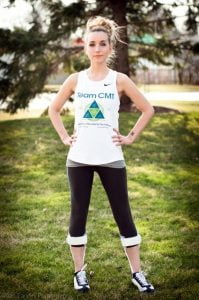 Di Billick is describing her frustration. “When I’m having difficulty walking down the street and people behind me get annoyed because I’m slowing them down, they pass and throw me a nasty look. But I can also tell they are puzzled because you can’t see what is going on with me.” Shaking her head, in annoyance more than disbelief, she continues, “I call Charcot-Marie-Tooth a blind disease because you can’t see it. People say I look fine and can’t understand that I have a problem. You can’t judge by appearances.” Within seconds she is laughing at how contradictory that sounds. A model and actress Di, 30, makes a living from her appearance.
Di Billick is describing her frustration. “When I’m having difficulty walking down the street and people behind me get annoyed because I’m slowing them down, they pass and throw me a nasty look. But I can also tell they are puzzled because you can’t see what is going on with me.” Shaking her head, in annoyance more than disbelief, she continues, “I call Charcot-Marie-Tooth a blind disease because you can’t see it. People say I look fine and can’t understand that I have a problem. You can’t judge by appearances.” Within seconds she is laughing at how contradictory that sounds. A model and actress Di, 30, makes a living from her appearance.
Forced to concentrate on catalog and print ad work because she is unable to wear the high heeled shoes required for runway modeling, Di manages to look at the positive. “I have clawed hands so this works to my advantage. I can have my picture taken with my arms around someone or my hands behind my back.” By 2009, her agent persuaded her to try acting, something she had always wanted to do. Soon she was getting jobs in commercials and independent films. Di’s biggest performance, however, might be on Saturday, April 7, when she participates in the 2012 Ringing In Spring 5K/10K Run in Valparaiso, IN, where she lives with her husband and stepdaughter. Di’s goal is to complete the 10K, an almost unimaginable idea for someone who just two years ago could barely get out of bed.
Like so many with CMT, Di remembers feeling clumsy as a child and constantly falling. “When I fell I would try to make fun of myself and laugh about it.” Super high arches and clawed toes made running impossible. When she was about seven years old, numbness began to settle in. Years of doctor visits provided every misdiagnosis imaginable. An endocrinologist diagnosed Di’s symptoms as diabetic neuropathy even though she doesn’t have diabetes. An Ivy League trained general practitioner, upon being told of symptoms including cold feet and legs and muscles that didn’t work, listened to her foot through a stethoscope. He then told her “there is a pulse, you are fine” and prescribed pain medication. In 2008 after her father was diagnosed with CMT, Di received the diagnosis as well. Her reaction was mixed. “There was relief to finally know what was wrong with us. And then I was terrified of what might happen; that it could get worse. “ She remembers the doctors talking about what she couldn’t do. “They said you can’t do this, you can’t do that. And they said I had to have braces. I didn’t need them at that time. It scared me into a corner.” After a couple of years Di “realized what I was doing wasn’t really working for me. I decided to take matters into my own hands.” She changed her eating habits to a vegetarian diet. Two times a week she sees an acupuncturist. “Acupuncture does not help with CMT-related pain for me,” Di states. “But it does help with mood and anxiety and allows me to cope better.”
The biggest change she’s made to her daily life is the one we keep being told is the most helpful: exercise. Two years ago Di started walking as exercise. To avoid falling Di focused on moving her hips to compensate for her weak leg muscles while also keeping her legs straight. Having forced herself to walk one mile, she spent the next two days in unbearable pain, unable to get out of bed. Di lay agonizing over her conflicting options. “I can’t be active because I’ll be in pain. But inactivity also causes pain.” She tries to describe its intensity. “The pain is out of this world. And, the cramps are so bad it makes you want to die. It goes from my knee to my ankle and wraps around my foot. When it happens, I just drop to the floor and scream. I can’t help it.” Di has found plunging her feet into hot water can release the cramp. Due to sensory nerve delay caused by CMT, she often doesn’t realize when the water temperature is too high and winds up with burns. Pain wasn’t the only fear she had. Di was worried about losing function too quickly. “I thought, I can’t get new muscles. What can I do to build up and keep what I have?”
Di knew the answer was to get up and try again. “What choice do we have but to fight? I fought through pain, in tears, through many sleepless nights. It hurt so bad to get started but then it got better.” Di now goes to the gym five to six days a week. Her routine changes depending on how she feels. Some times after using the elliptical machine for 10 minutes she has to stop for the day. Other times she can add spinning on a bike for 10 minutes and/or walk the indoor track. She also tries to incorporate strength training for her hips and legs above the knees. Her favorite exercise is swimming. “I can swim faster than my husband because my arms are strong.” Being in water allows Di to do something she can’t anywhere else. While wearing a swim belt Di can run underwater.
Over time Di has been able to slowly increase the distance she walks. “The first time I walked three miles I called my husband from the gym bathroom and wept into the phone.” Even now, the accomplishment somehow surprises her. Last May Di decided to use her exercise for a cause and began training for the 5K in Valparaiso. “I thought, I’m going to do something crazy, like walk up to 4 miles. I’m going for broke, a real challenge so people will understand more about CMT. Maybe I can inspire people and raise awareness. I want people to be aware of what CMT is and know that I have it. But I don’t want to be defined by it. CMT is just one part of me.”
Recently Di was fitted for ankle-foot orthosis (AFOs) wearing them whenever she will be out of the house for over an hour. She doesn’t wear them at the gym and says she can’t drive in them. But, Di is planning on wearing them at the 5K. “People think just because you wear braces, it sets you apart. I want to be the person to show them, especially children, not to be afraid to try to do what they want.” Di pauses a moment, and then adds, “I want them to see me that day, wearing my AFO’s. And I want to give them hope.”



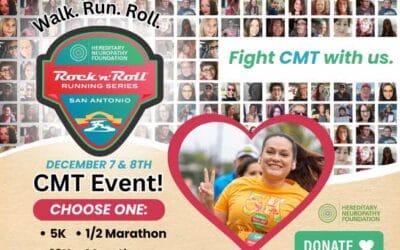
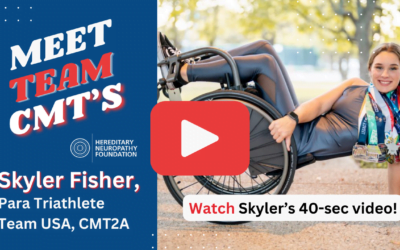
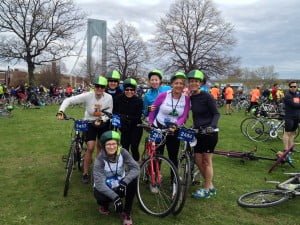
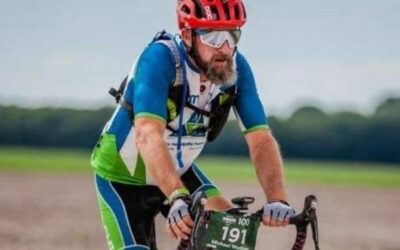
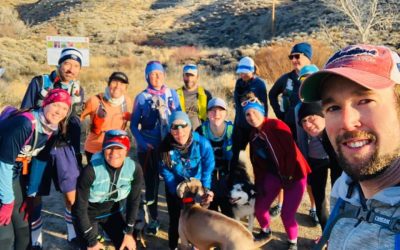
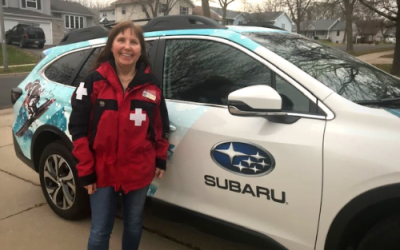
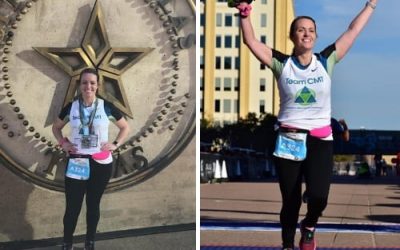
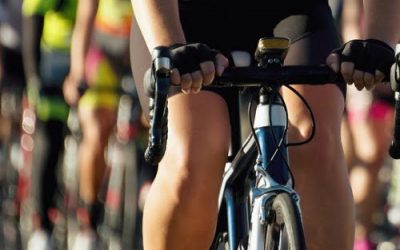

Di is the most inspirational women I know. I am blessed to have her as my teacher for modeling and IPAA! She has shared numerous stories with us in class and I am just truly inspired to know she is this successful. she is so humorous and positive! I am blessed to have her as my teacher and i will
use her words of wisdom and incouragment on my road ahead. -Jordan Ollech 14
Hello Di You are such an inspiration. I’m so glad I found your story. My son, 15 was just diagnosed with CMT. Dou have any advice on finding a comfortable shoe we are struggling with this.
Hi Pam,
Thank you for your comment. Please look at the HNF Pinterest page as fellow CMT’ers shared what shoes work for them. https://www.pinterest.com/HNFcure/brace-friendly-shoes/
You sound like my sweet, baby girl. A determined 9 year old just diagnosed this week. Thank you for being an inspiration.
Di, you are definitely an inspiration. It helps to know that you are not the only one going through this problem, like Heather I was diagnosed in my mid 30’s, I was pregnant when it started, I thought it was due to the pregnancy, I bore the pain and discomfort until I had my daughter. I saw no improvement, and visited a neurologist who almost sent me to my grave with incorrect diagnosis. to cut the long stary short, I have been wearing the AFO since 2008 and now I feel so dependent on it. I wonder whether there are other options to help with the pains and discomfort.
I was diagnosed when I was in my mid 30’s , I want to say 35 now I am 40. I do go to the gym like Di…but my right knee locks when I walk causing pain. I also wear afo’s….inconclude I made my website since I am an athlete and found what works for me…please check it out…strongcustoms.com
Anna, don’t ever give up! Let it motivate you to prove to yourself that you can do anything!
You may be too young to know who Julie Newmar is, but she is an actress once known for her beautiful legs…and she had CMT!
Hi Di
I was told when I was about 7 years old I had CMT I am now turning 21 I need to learn to run I have never learned and I was just accepted in law enforcement and have to pass physical do you really feel this is possible for me I walk long distance I wear braces and am very active in my life my parents have raised me to think there is nothing I cannot do. I have a numerous surgeries on my feet please advise I need to learn to run thanks Kyle
Thank you for this story. I was diagnosed with Charcot-Marie-Tooth when I was three, and am now nineteen years old. I love acting but I’ve given up on the idea of ever being an actress because of my condition. I’m so afraid of losing my ability to walk and what the future has in store for me. I do not want to give up, and I know I’m stubborn enough that I won’t, but the journey seems quite intimidating. Di, you have given me hope and I thank you for being stubborn as well to prove to people like me to not let go of dreams, to not give into fear. It’s a person like you that I aspire to be one day.
Thanks again,
Anna